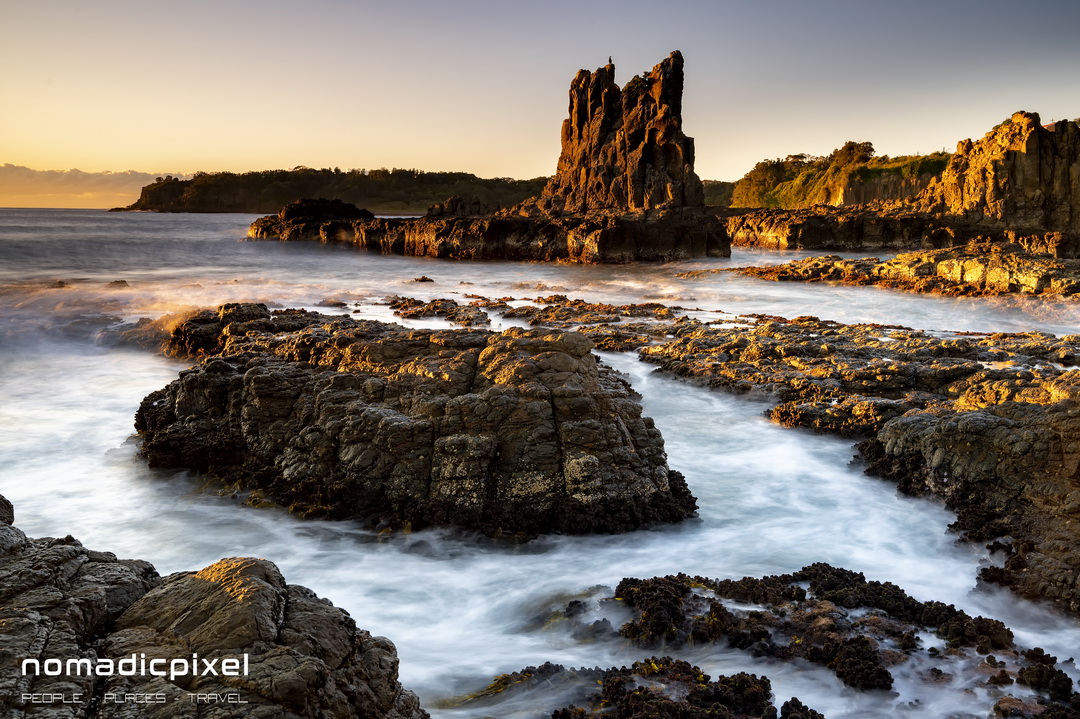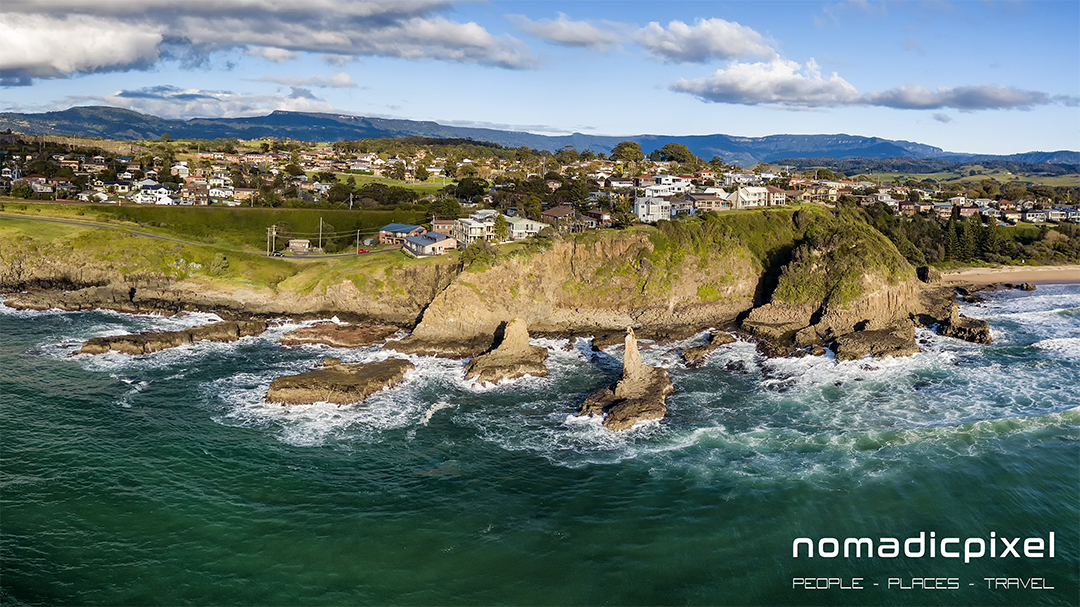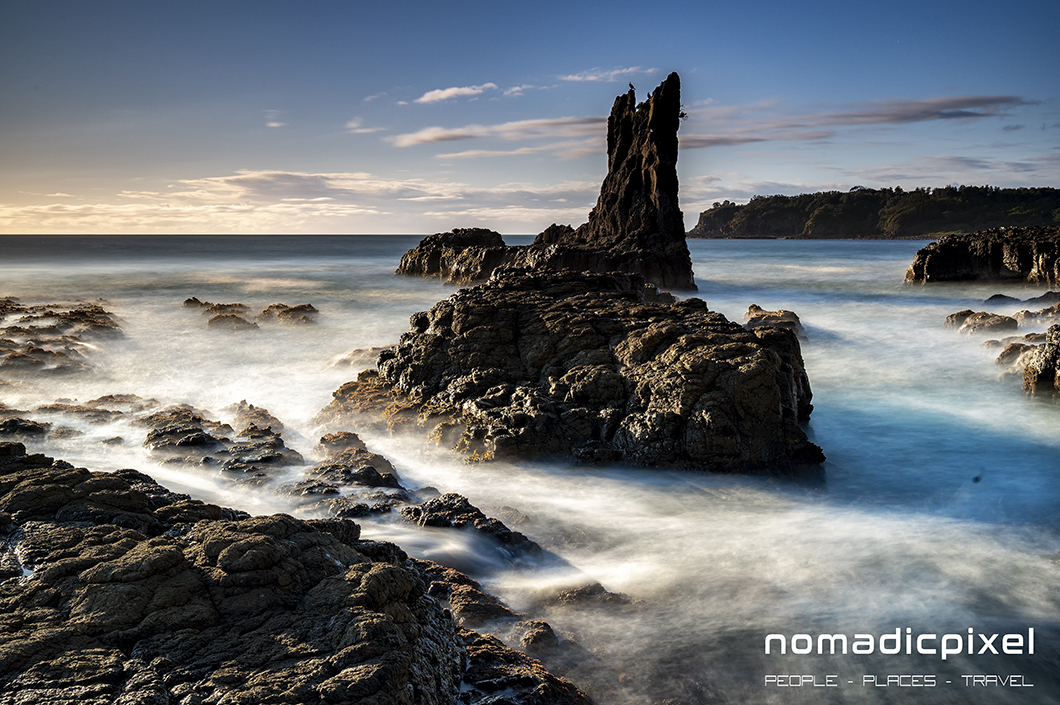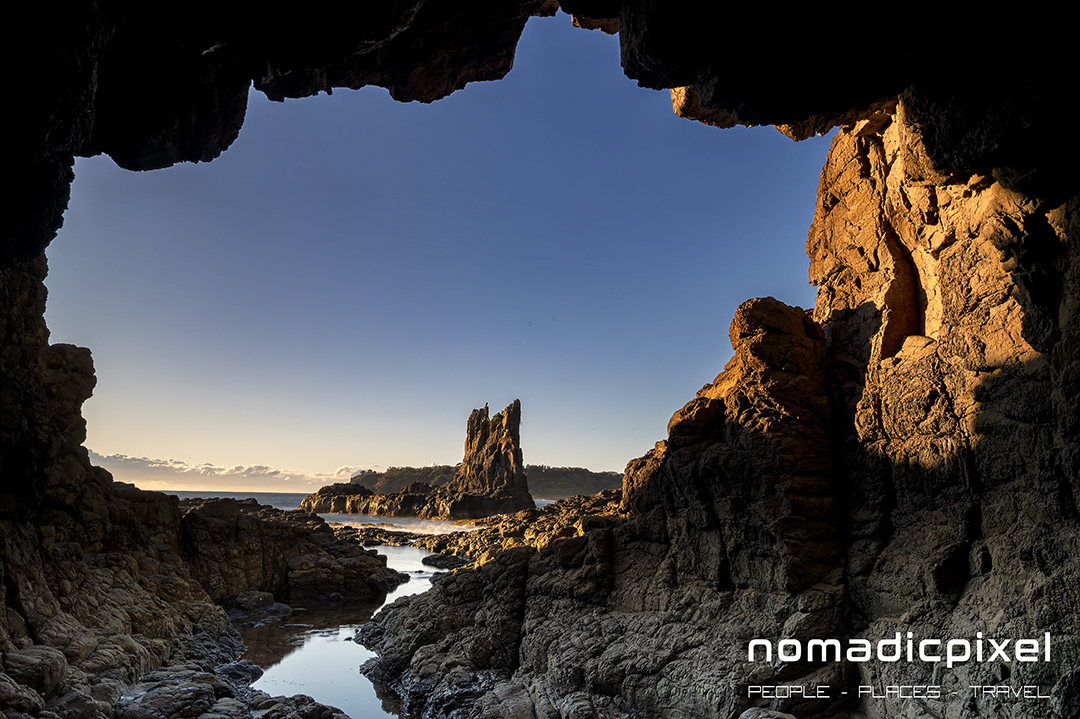Photographing Cathedral Rocks… Located on the south coast of New South Wales, these iconic sea stacks rise up majestically from the sea and are an almost perfect location for sunrise seascape photography.

Photographing Cathedral Rocks – Where Are They?
Cathedral Rocks are located on the headland at the southern end of Jones Beach at Kiama Downs and a very pleasant 90 minute drive south of Sydney.
The nearest road is North Kiama Drive and the best (and safest…) access is from the parking area opposite Moona Avenue. There are a couple of paths down on to the beach and you simply turn right and walk down to the headland.
It’s a really good idea to check out the whole area during the day. Which will allow you to get your bearings and work out where to take your take your photographs in the safety of daylight!

Photographing Cathedral Rocks – What Are They?
Cathedral Rocks are sea stacks which are steep rock columns that rise out of the sea near a coastline. They are formed over time by wind and water erosion, which weaken cracks in the headland causing them to eventually collapse.
The sea stacks are the free-standing columns that are left after that collapse.

Photographing Cathedral Rocks – When to Go?
Located as they are on the east coast of Australia Cathedral Rocks are best known for sunrise seascape images. Where the rising sun bathes the area in beautiful soft light during the “golden hour”.

So early morning is the time to catch that golden hour light. Which means getting to Jones Beach in the dark, before first light… And why it is such a good idea to scout out the location the day before in daylight. You should also time all that with low tide and good weather because as the tide is coming in you could find yourself stuck!
That said, there is very little light pollution at Cathedral Rocks making it a great location for star-trail and astrophotography!
What to Photograph at Cathedral Rocks?
Well, stating the obvious… the Cathedral Rocks sea stacks are the main game. The flow of water in and around them create great opportunities to use ND filters and longer exposures to blur the movement to great effect.
Exactly where you position yourself to capture great images is a function of the tide and the weather. My visit coincided well with low tide as planned. But there had been very strong winds the days before and the sea was quite rough. Which limited where I could position myself.
There is also a very iconic sea-cave burrowed into the cliffs, which provides a nice framed outlook of one the main sea stack. But it is only accessible at low tide…

Equipment…
Personally I used a Nikon Z6 camera. Together with the Nikon 14-30 f4 and 24-70 f4 Z lenses mainly on manual focus. My tripod was a Gitzo GT2540 tripod with a RRS BH-40 and the NiSi V5 filter kit.

Leave a Reply